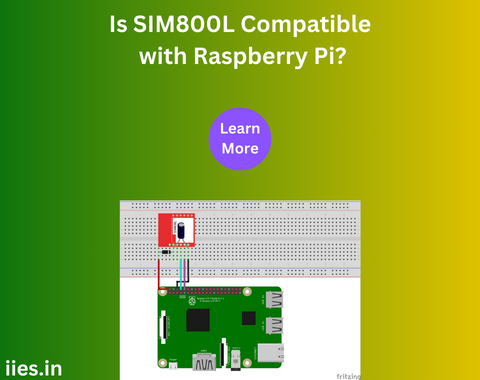
The Raspberry Pi, a versatile single-board computer, has become a cornerstone of the maker community and DIY projects. Its compact size and powerful capabilities make it an ideal choice for various applications, including home automation, robotics, and communication projects. One such communication module that enthusiasts often consider is the SIM800L GSM/GPRS module. In this article, we will delve into the compatibility of SIM800L with Raspberry Pi, exploring the integration possibilities and potential applications.
The SIM800L module is a GSM/GPRS (Global System for Mobile Communications/General Packet Radio Service) module designed for wireless communication. It enables devices to connect to the cellular network, making it suitable for applications such as SMS messaging, mobile data transmission, and even IoT (Internet of Things) projects. The module supports quad-band GSM/GPRS frequencies, making it versatile for use in different regions.
The SIM800L module typically communicates with external devices through UART (Universal Asynchronous Receiver-Transmitter) serial communication. Fortunately, the Raspberry Pi features GPIO (General Purpose Input/Output) pins that include UART interfaces, making it compatible with the SIM800L module. Users can connect the TX (transmit), RX (receive), and power supply pins of the module directly to the corresponding GPIO pins on the Raspberry Pi.
It is essential to ensure that the voltage levels are compatible between the Raspberry Pi and the SIM800L module. The Raspberry Pi GPIO pins usually operate at 3.3V, while the SIM800L module often requires a 5V power supply. In this case, a level shifter or voltage divider may be necessary to avoid potential damage to the Raspberry Pi.
Software Integration:
To establish communication between the Raspberry Pi and the SIM800L module, users need to configure the serial communication settings on both devices. This involves configuring the baud rate, data bits, stop bits, and parity settings to ensure proper communication.
The Raspberry Pi operating system, whether Raspbian or another distribution, typically includes built-in support for serial communication. Users can use the Python programming language to interact with the UART interface and send AT commands to the SIM800L module. AT commands are standardized commands used to control and configure GSM/GPRS modules.
For example, to send an SMS using the SIM800L module, the user can send a series of AT commands through the serial interface from the Raspberry Pi. These commands instruct the module to initialize, set the recipient’s phone number, and send the desired message.
Potential Applications:
The compatibility of SIM800L with Raspberry Pi opens up a range of exciting applications for enthusiasts and developers. Some notable applications include:
1. SMS-based Notification Systems:
– Set up a notification system that sends SMS alerts for specific events, such as temperature thresholds, security breaches, or system malfunctions.
2. Remote Monitoring and Control:
– Develop projects that allow remote monitoring and control of devices using SMS commands. This could include turning on/off appliances, checking sensor readings, or activating security systems.
3. IoT Projects:
– Incorporate the SIM800L module into IoT projects to enable cellular connectivity for devices in locations without Wi-Fi. This is particularly useful for projects in remote areas or outdoor environments.
4. Vehicle Tracking:
– Implement a vehicle tracking system using the Raspberry Pi and SIM800L module. This can be useful for fleet management, logistics, or personal vehicle tracking.
Challenges and Considerations:
While the combination of SIM800L and Raspberry Pi offers exciting possibilities, there are some challenges and considerations to keep in mind:
1. Power Consumption:
– The SIM800L module can have varying power requirements, and it’s crucial to ensure a stable and adequate power supply. Consideration should be given to power consumption, especially in battery-powered projects.
2. Antenna Placement:
– The SIM800L module requires an external antenna for optimal performance. Users need to carefully choose and place the antenna to ensure reliable communication.
3. Network Coverage:
– The effectiveness of the SIM800L module depends on the availability of cellular network coverage in the project location. Users should verify network coverage before deploying projects in remote areas.
4. Security Considerations:
– When dealing with SMS communication, security is a concern. Implement encryption and authentication mechanisms, especially when dealing with sensitive information.
The compatibility of the SIM800L module with the Raspberry Pi opens up a world of possibilities for communication projects. Whether you’re interested in creating SMS-based notification systems, remote monitoring solutions, or innovative IoT applications, the integration of these two components provides a powerful platform for exploration. By understanding the physical, electrical, and software aspects of compatibility, enthusiasts can embark on exciting projects that leverage the strengths of both the Raspberry Pi and the SIM800L GSM/GPRS module. As technology continues to evolve, this combination represents a compelling option for those looking to push the boundaries of what can be achieved in the realm of wireless communication and connectivity.
Indian Institute of Embedded Systems – IIES